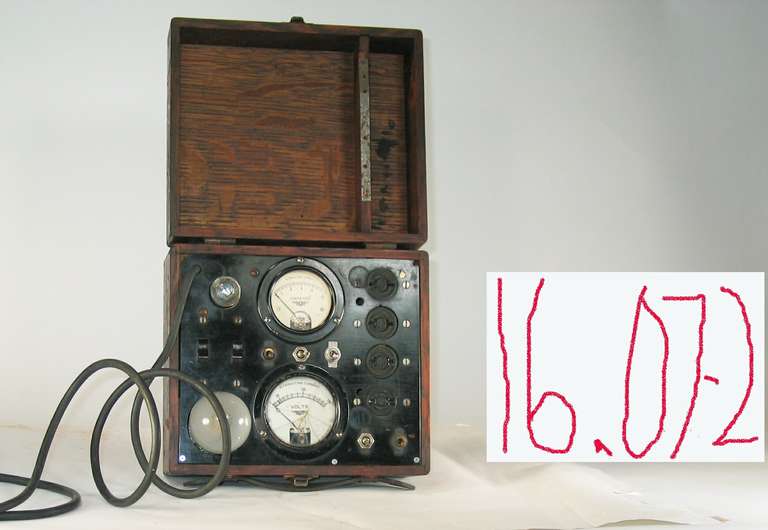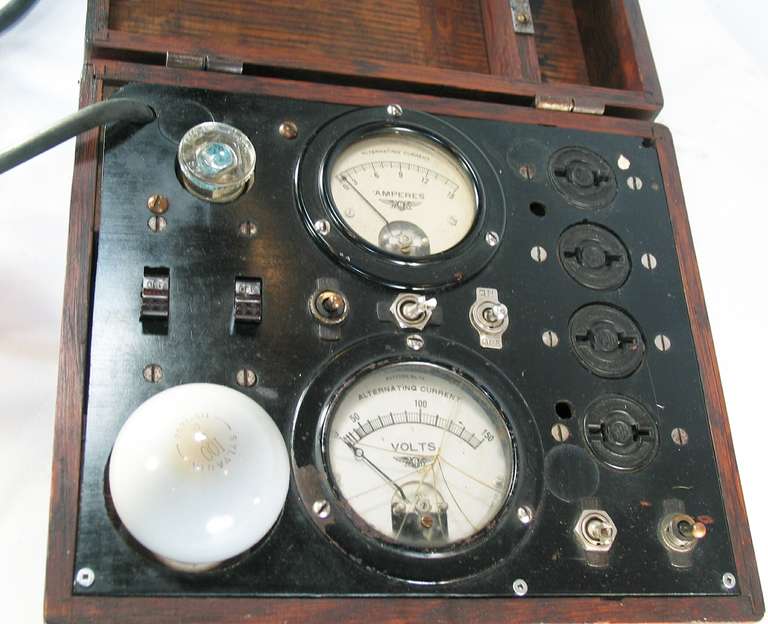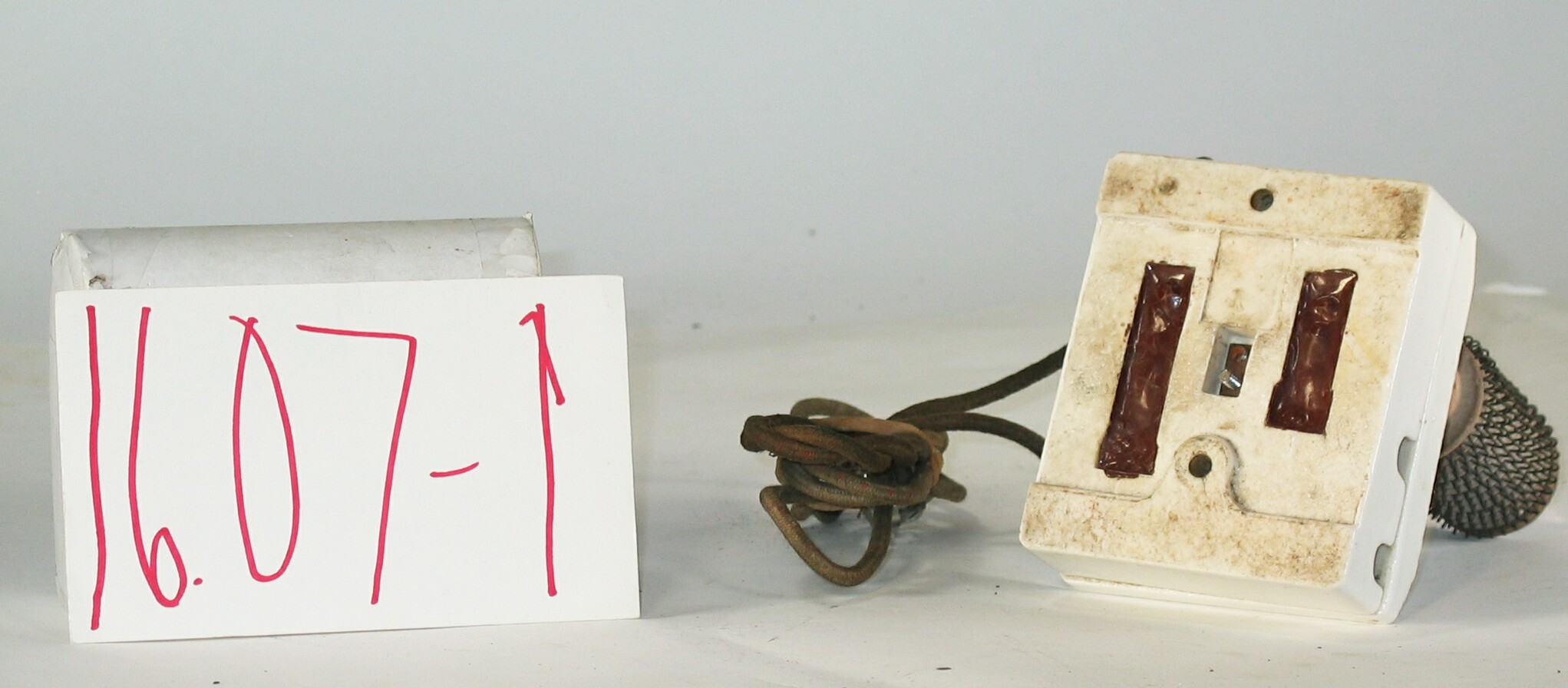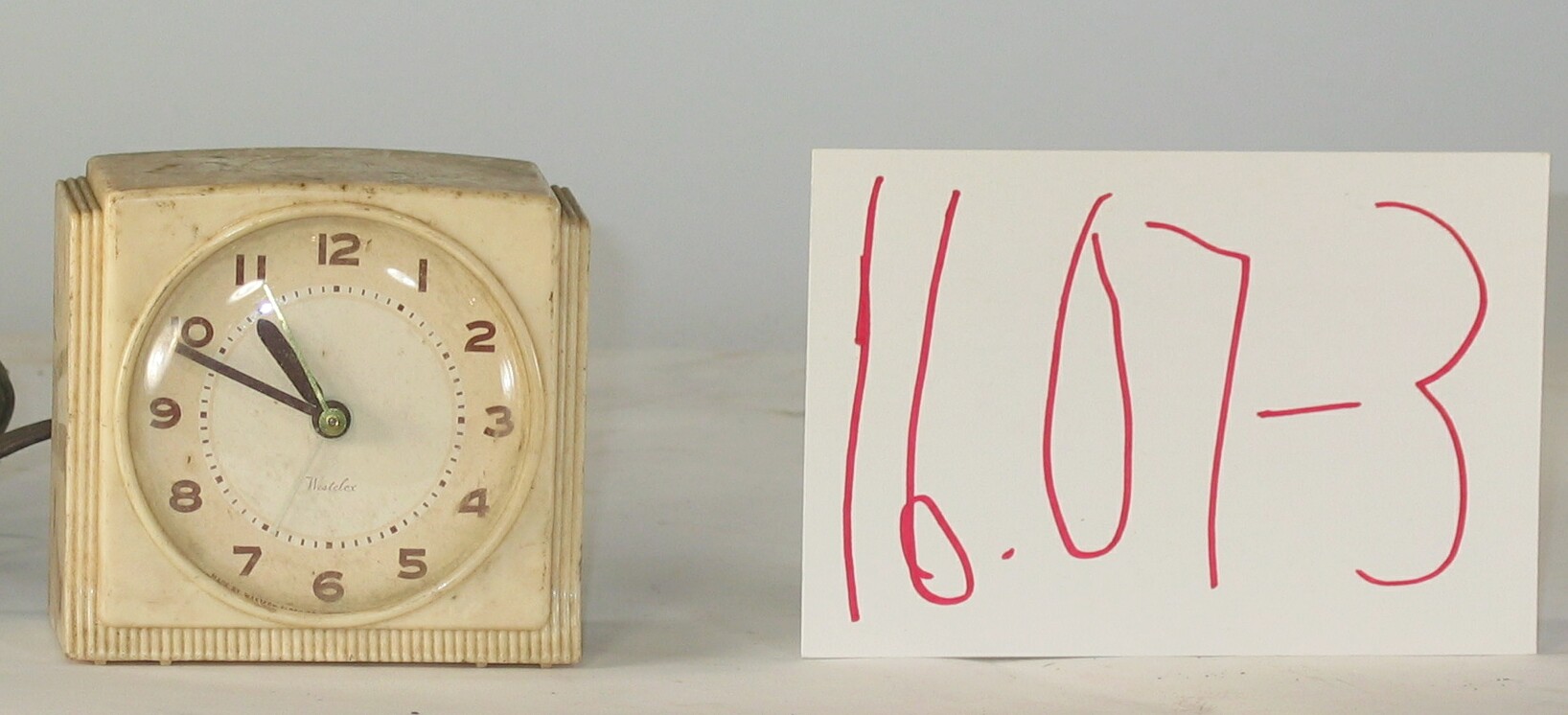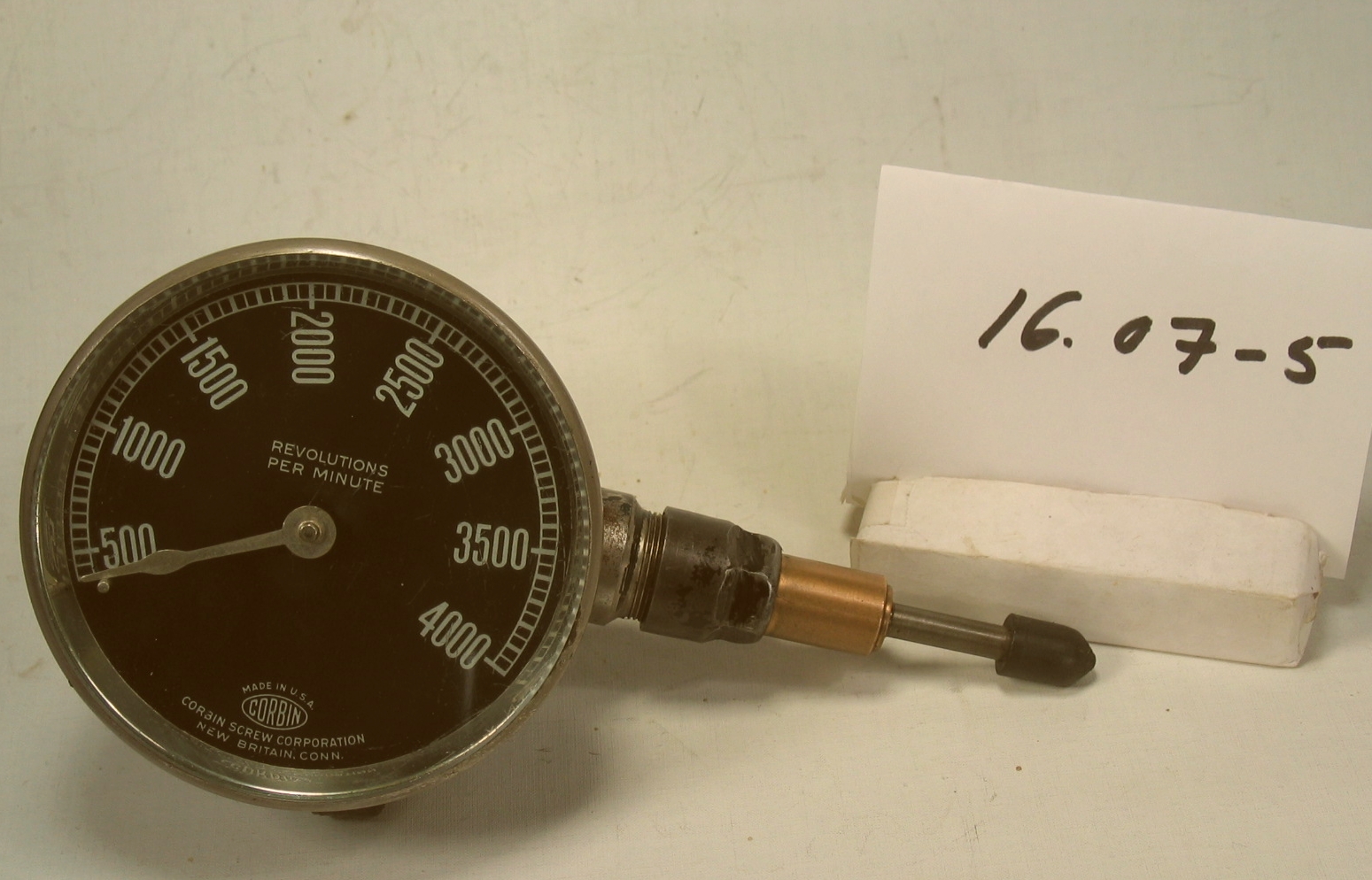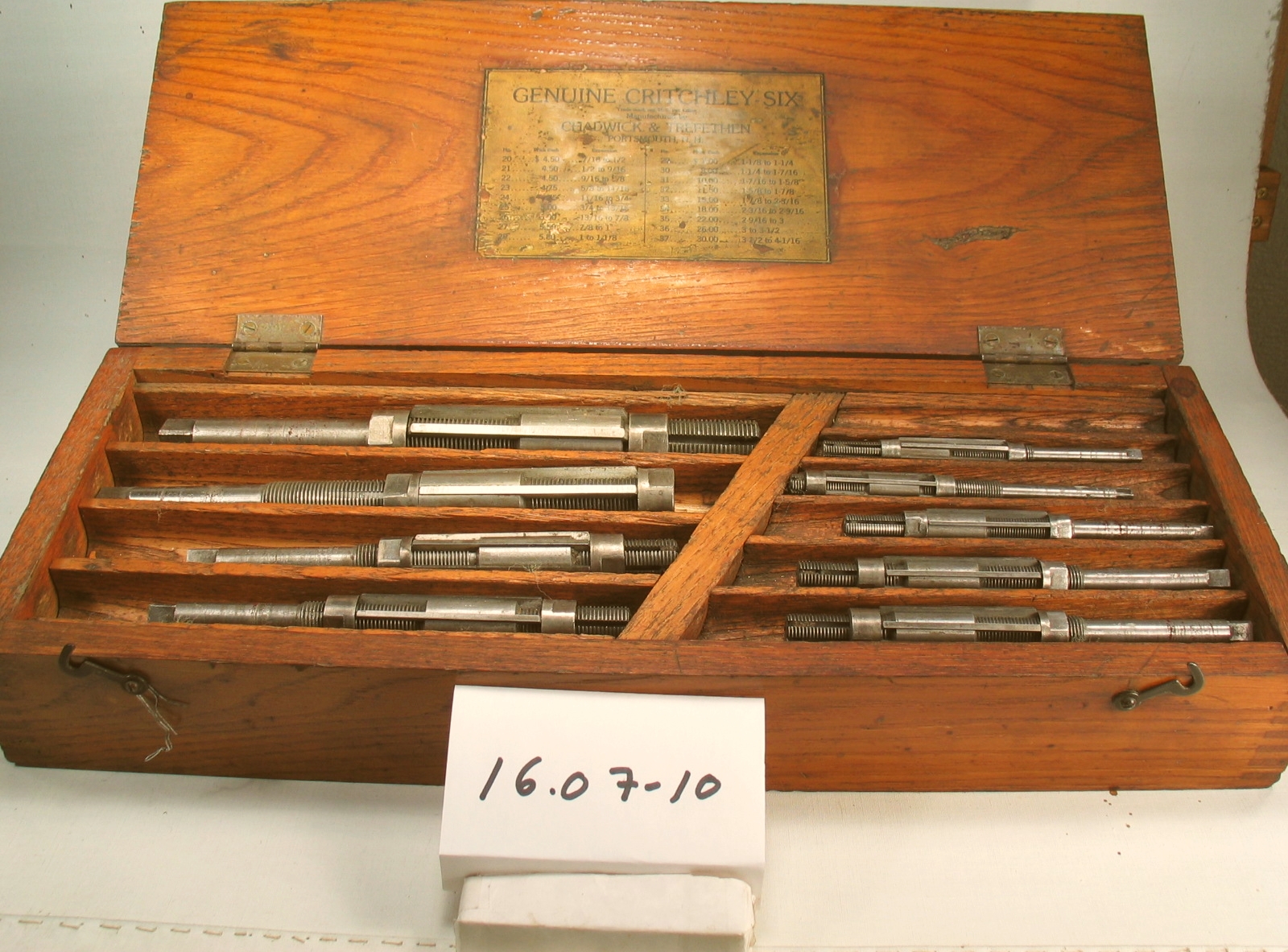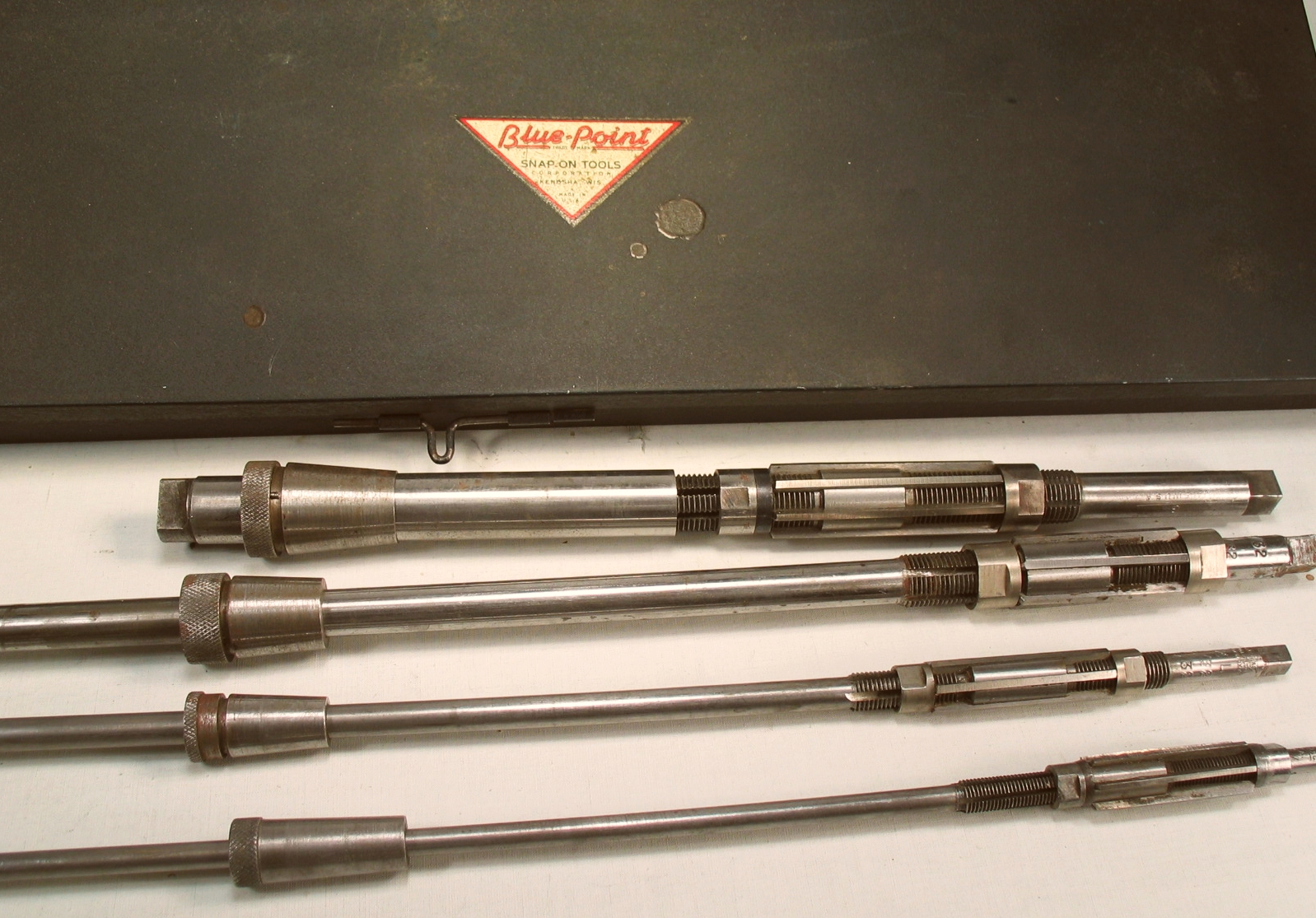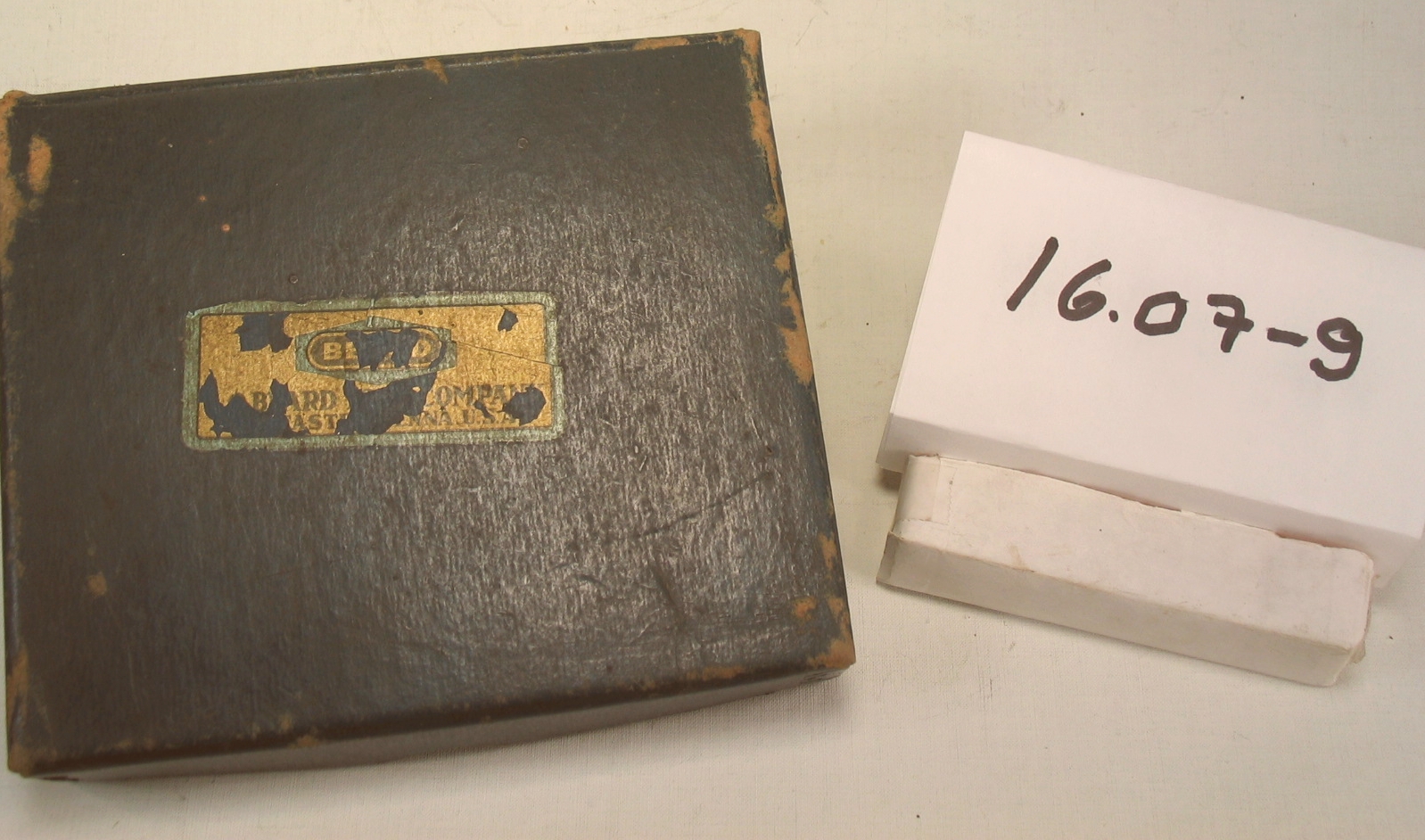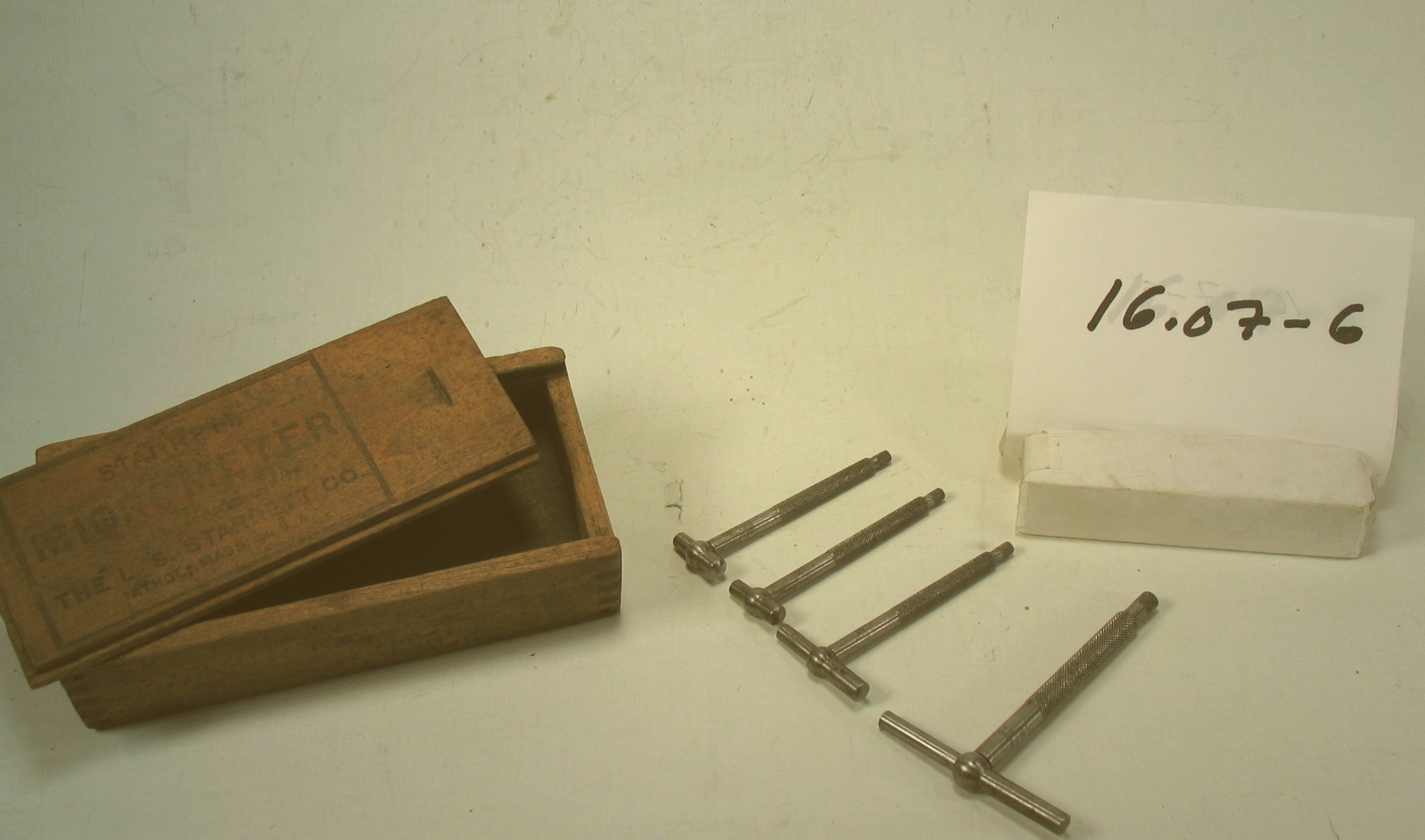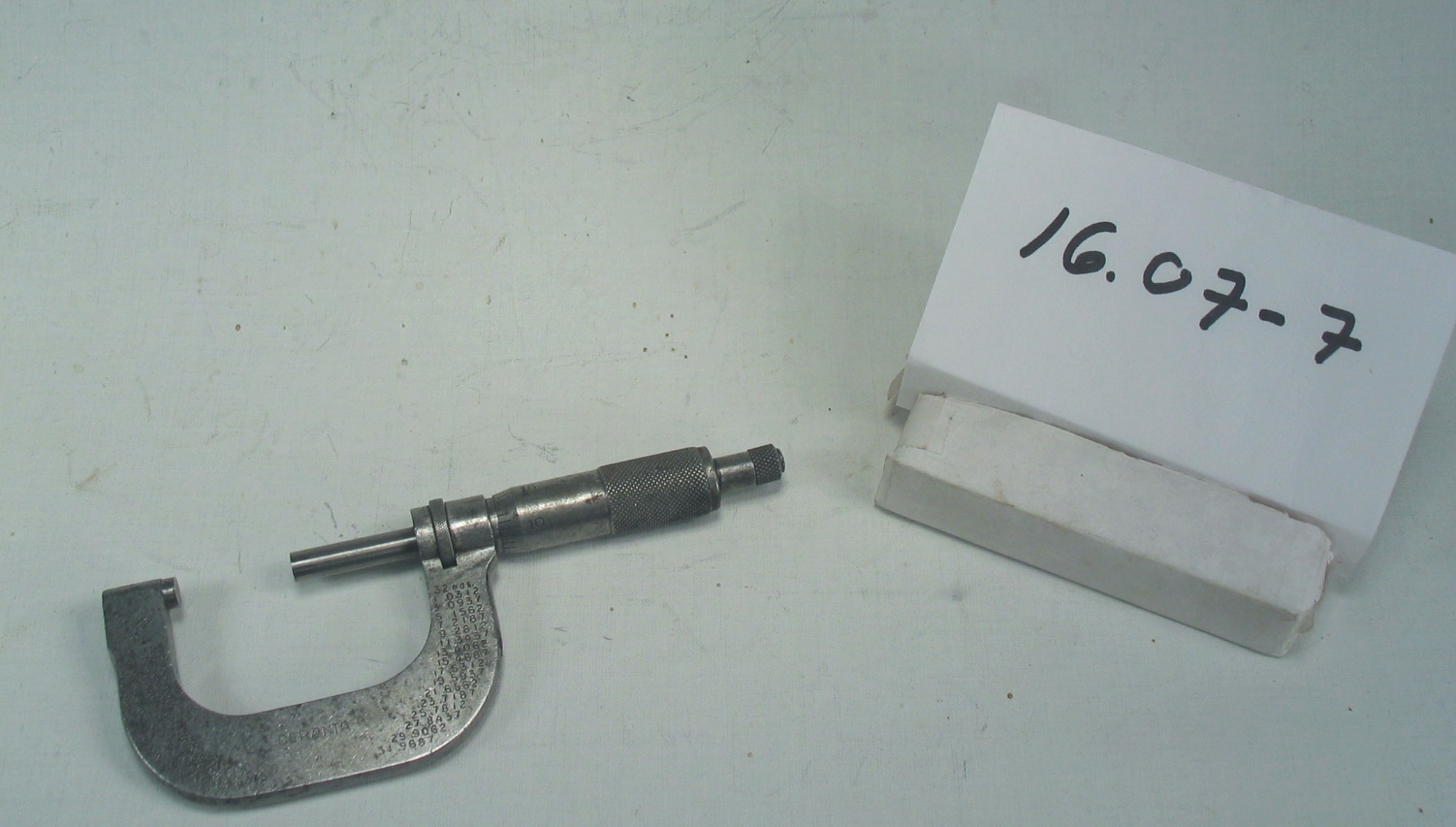16.07-2: 1946 Shop Designed Electrical Test Analyser
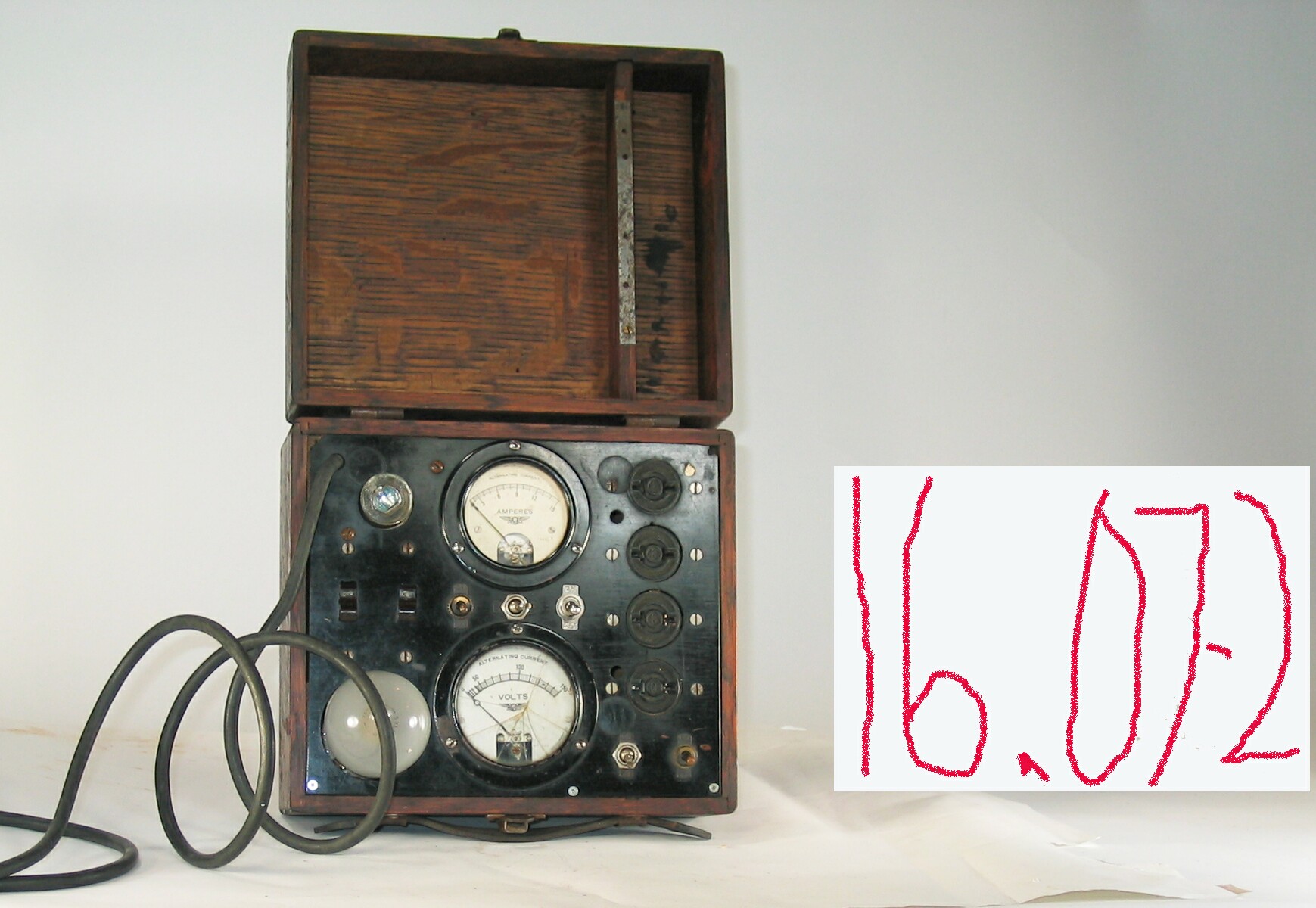
| HHCC Accession No. 2006.210 | HHCC Classification Code: 16.07-2 |
|---|
Description:
A portable, household refrigerator, electrical test analyser in hansom wooden carrying case, locally made using an assembly of old electrical and radio test gear. Reflecting the ingenuity of an early HVACR mechanic, the device provided for fused fault protection, current limiting load protection and continuity testing, as well as providing for the measurement of applied voltage and load current, locally made, circa 1946
Group:
16.07 Electric Motors - Installation, Test and Repair
Make:
Shop designed, assembled, locally made
Manufacturer:
See Notes 1 and 2
Model:
See Notes 1 and 2
Serial No.:
See Notes 1 and 2
Size:
10 x 10 x 6 inch h.
Weight:
5 Lbs.
Circa:
1946
Rating:
Exhibit, education, and research quality, illustrating early ‘in-line’ portable test and electrical measurement equipment used by one innovative HVACR mechanic, well ahead of his time. Improvised and made at home from recycled electrical components, it was part of a newly emerging service economy in Canada, characteristic the first half of the 20th century.
Patent Date/Number:
See Note 2
Provenance:
From York County (York Region) Ontario, once rich agricultural hinterlands, attracting early settlement in the last years of the 18th century. Located on the north slopes of the Oak Ridges Moraine, within 20 miles of Toronto, the County would also attract early ex-urban development, to be come a wealthy market place for the emerging household and consumer technologies of the early and mid 20th century.
This artifact was discovered in the 1950’s in the used stock of T. H. Oliver, Refrigeration and Electric Sales and Service, Aurora, Ontario, an early worker in the field of agricultural, industrial and consumer technology.
Built by Harold Oliver, at the time a grade 12 -13 student, under the guidance and watchful eye of his father Howard [T. H.Oliver]
Type and Design:
Portable electric system analyser, with fused fault protection, load current limiting protection, continuity tester, and line current and voltage measurement.
Construction:
Oak carrying case with spring clasp and leather strap carrying handle Removable top with slide out hinges Black Bakelite, recycled control panel Jewel Voltmeter, 0 to 150 volts, A.C., Patent 74, [available data suggests that US patents between 1 and 110 were issued in 1836 [see note 2]. Jewel A. C. Ammeter, serial #16960 [see note 2] Assortment of toggle switches of various manufactures and configurations H & H, 110 volt, 2 Blade single receptacles [see Reference 3] 15 amp plug fuse and socket 100 watt standard base lamp and socket 6 foot heavy rubber, twin conductor, Type J wiring harness with two prong attachment plug
Material:
Special Features:
Examples of early current and voltage measuring instruments by Jewel. Designed, not for laboratory use, but for the rigors of the real world of the service repair man.
Accessories:
Capacities:
Performance Characteristics:
Operation:
Control and Regulation:
Targeted Market Segment:
Consumer Acceptance:
Merchandising:
Market Price:
Technological Significance:
This made at home, electric test analyser tells many stories of its time: The ingenuity of one early, do-it-your-self worker in the refrigeration field, in period when such equipment was not otherwise available. The nature of in-line, electric, field test equipment required to diagnosis electric motor driven appliances starting to invade the Canadian home in the late 1920’s, The new knowledge and skills to be acquired by early workers in the HVACR industry of electric circuits and systems. The increasing sophistication and complexity of 20th century technology applications for the Canadian home, and the accompanying need for better instrumentation and measurement for equipment installation, performance monitoring, trouble-shooting and diagnosis. The ‘in-line’ test technology represented here would be a welcome contribution to the HVACR serviceman’s tool box. The convenience of induction, clamp-on metering was still, for most, 3 decades away [ see 16.07-4].
Industrial Significance:
In the early post W.W.II years, it became increasingly evident that the HVACR industry was seriously limited by the lack of rugged, affordable test and measurement equipment for field use in installation and after market service. The field was clearly dependent on manufacturers who would design, develop and bring such equipment to market, at a price the tradesmen could afford. Often the equipment that was commercially available in the 1920’s and 30’s was of the laboratory type, too sensitive and delicate, lacking the robust quality needed for life in the toolbox. What was required was a new generation of such measurement and test devices. In the mean time, it was left to the ingenuity of the do-it-yourself HVACR mechanic.
Socio-economic Significance:
It was the 1930’s and as Canada slowly emerged from the economic depression of the period, so too would a new economic sector emerge, the service sector, one which would grow to dominate, contributing much of the country’s economic strength well before the end of the century. The home service trades grew rapidly during this pre W.W.II period and on into the 1950’s, plumber, electrician, heating and refrigeration. They brought with them a new quite different breed of industrial worker, mobile, entrepreneurial, and skilled in the new consumer technologies, then available for the Canadian home.
Socio-cultural Significance:
One can only imagine the reaction of the householder when the local refrigeration mechanic walked into the kitchen carrying such a diagnostic instrument. It was an earlier marker of what would be a vastly changing household culture, with quite different expectations, one dominated by electric and electronic household technology. It was a culture that was about to explode, triggered by the rapid economic growth and consumer interest in technology, following W.W.II.
Donor:
G. Leslie Oliver, The T. H. Oliver HVACR Collection
HHCC Storage Location:
Tracking:
Bibliographic References:
Supreme set Analyser, Model 90, Operating Data, Supreme Instruments Corp. Greenwood Miss. undated, circa 1929 Instructions for Use of Weston Model 537, Type 2 A.C. & D.C. Radio set tester, Weston Electric Instrument Corp. Newark N.J, Copyright 1928. Canadian General Electric Co. Limited, Electrical Supplies, Catalogue No 20, 1920-21, H & H receptacles P. 223
Notes:
Case carries a serial number 15120, recycled radio test gear of the period, possibly originally part of a radio test analyser , by the Supreme Instruments Corp. Greenwood Miss. or by the Weston Electric Instrument Corp. Newark N.J, designers of high quality radio and electrical test analysers of the time, see References 1 and 2.
Jewel Voltmeter, 0 to 150 volts, A.C., Patent 74, [available data suggests that US patents between 1 and 110 were issued in 1836.Jewel A. C. Ammeter, serial #16960
